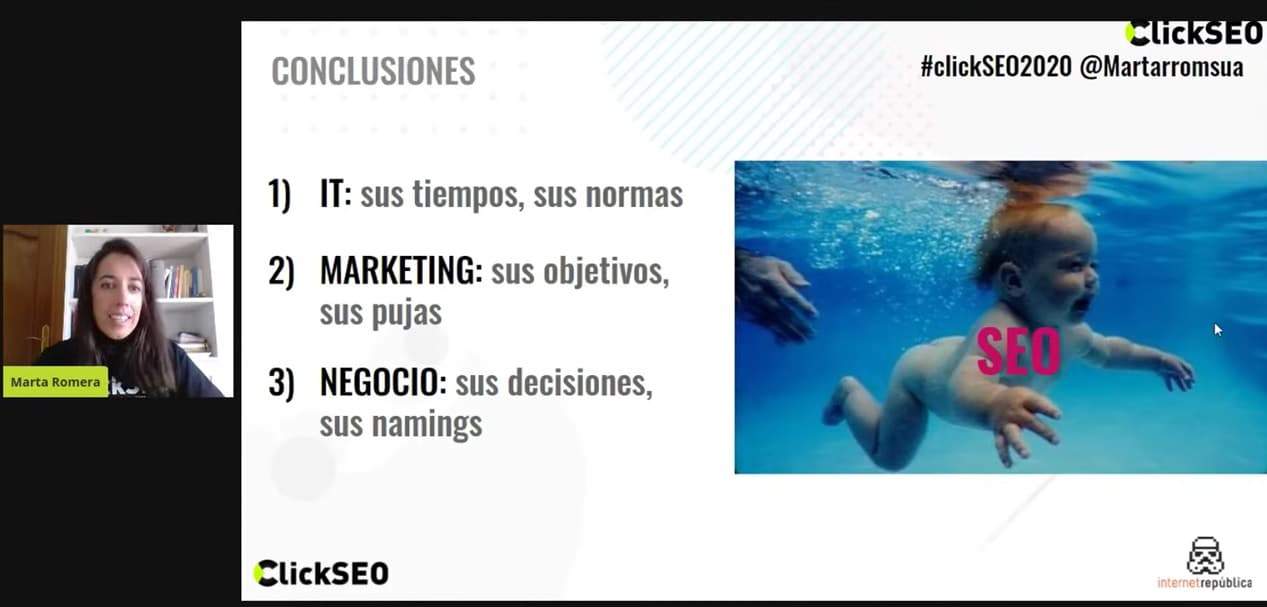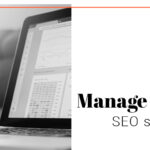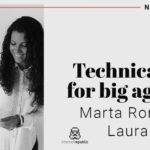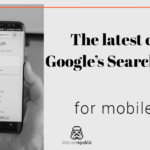
Love-hate relationship: SEO for brands
Hello, community!
As most of you knows, at Internet República we specialise in SEO for brands such as El Corte Inglés, Orange, Supermercados Dia, Consum and Hitachi.
I recently participated as Internet República’s SEO Manager in ClickSEO 2020. ClickSEO 2020 was a free online event that took place on the 7th and 8th of December involving many SEO experts. My colleague Laura López, Internet República’s SEO Manager, also attended the event.
During my speech at ClickSEO, I discussed the advantages and disadvantages of SEO projects for big brands. I will explain all the details in this post, but you can also see the full presentation here.
Certainly, big brands work a bit like Ferrari, and it would not be fair to compare a Ferrari with a regular car, because any on-page change in this kind of projects has a quick response in SERPs.
We cannot ignore the fact that both on- and off-branding campaigns boost generic brand searches. For example, if you are running a TV campaign, it encourages Google search, which increases the ranking of generic keywords that increase traffic. Indeed, a high percentage of traffic in many of these projects (we are talking about 70-80% figures) corresponds to clicks on branded queries.
This may seem attractive at first, although it is not all true. Here is an example of a brand with a hypothetical SEO project that came to the agency to understand how it works.
SEO Briefing
First, we would request a briefing to learn about the competitors, establish the business areas the brand wants to promote, whether it has worked on SEO before, etc. The aim is to understand what we need to focus our strategy on and how we need to approach the audit.
SEO Objectives
One of the things that can be surprising is when some clients ask for an SEO target. Who could promise a yearly traffic increase of 30-40%, who can promise a high-ranking position for certain keywords?
When you start from 0, you can promise a 100% growth, thus if a project has some stability and already gained in rankings, we could consider calculating the growth percentage that we could reach, to get closer and make a more realistic estimation.
This would be done by calculating the estimated CTR in top 1 for impressions or searches for a set of main keywords, then we would know the potential traffic we could acquire if we had all those keywords in top 1. If we calculate that click-through volume as a target and add the current SEO traffic (which we assume will be maintained), we can provide a realistic SEO traffic target.
Here you can read a blog post on how to set realistic SEO goals.
Web Analytics
On the other hand, in the briefing, we ask for access to web analytics data to evaluate the current SEO traffic for the rest of the channels. But sometimes we find that these clients do not give third parties access to this data due to internal policies, and when they provide that access, we find out that they have poorly customised acquisition channels, or with another casuistry such as doubtful measurement. In this type of situation, sometimes we must give up the correct monitoring of web analytics within these tools, but we will always be able to rely on the Search Console.
SEO Audit
After this briefing, we start with the audit, focusing on what is technical SEO, with the on-page analysis: crawling and indexing, cannibalisations, internal linking, structured data, Core Web Vitals, etc.
Once the on-page analysis is carried out and possible optimisations are detected, what do we do with all this list of actions? We must prioritise, tell the client what needs to be done first based on a resource – impact, i.e., the actions that require the least resources and will have the greatest impact should be implemented first.
Prioritisation and Quick-Wins
If the actions we need to implement are resource-intensive, they should be planned for the long term. Once this list of tasks has been drawn up, it is time to pass it on to the client. However, the IT department that oversees implementing the changes on the website might find it impossible to implement, or that it would take way too long. The IT department often excludes the SEO from their choices and makes marketing strategies get trapped by the implementation timings.
While IT evaluates whether to apply this list of optimisations and when, we will have to keep looking for opportunities, to see how we can improve our SEO objectives without being dependent on IT.
Branded SEO traffic
In these projects, as I mentioned at the beginning, branded SEO traffic often exceeds 80%. Many SEO experts might think that it is all done and that there is little we can do here, right? Well, not quite! We are dealing with projects where the brand keywords have more searches than the generic ones and these searches do not always convert into SEO traffic.
Therefore, we must look for loopholes within the brand because in most situations there is more traffic gained from branded keywords than from generic ones.
After all, brand traffic is conditioned by three super important points: average brand position, brand CTR and brand impressions.
Branded SEO Rankings
In top 1, the exact brand CTR could be between 70 and 90%. We assume that the brand will always be positioned in top 1, but this is not always the case. Sometimes the brand can even be on the second page of results, so the margin we can have to gain clicks is sometimes remarkably high.
Yet this is not so simple, because sometimes we face brands with different domains, not only by country but also because they have various business structures within the brand itself, which compete in SERPs. This is not only about exact keywords, but also about the average position of the product brand.
The solution, which could be to migrate the content from one site to another by consolidating the information on a single site, is not always viable (for business, IT, etc.). In these cases, we would have to use other strategies to gain traffic.
Brand SEO CTR
As for the CTR of branded SEO, as we mentioned, it is around 70-90% depending on the SERPs. But sometimes it is lower, and in these cases, we would have to analyse the reason.
One of the reasons we have seen is that the average position was lower, although being in the top 1 that figure may still be lower.
Another case could be that there are subdomains within the site links taking traffic away from us. This is not necessarily a bad thing, but it is better to analyse and keep it under control.
In addition to site links, the SERPs are a flea market for some brand queries: we find SEM results, shopping results, and even then, the top 1 SEO results are unnoticed. Therefore, many elements make the user get distracted and click on another site that is not ours.
We can see that other pages have to change results on SERPs. In the year-on-year comparison, the SEO CTR of our brand has lost, despite the top 1 position because Google itself includes more elements within its SERPs, which can distract the user’s attention when clicking. This can also affect our CTR.
Another factor for the CTR of branded SEO despite being at the Top 1, is SEM. There are brands with no competition on SERPs, yet they bid for their brand, penalising its organic traffic. Ideally, there should be a negative keywords list with the exact brand names because there is no competition or other ads. Therefore, this traffic should be shifted to the organic result.
We also must look at impressions. If we make a year-on-year comparison, we see that we do not always gain impressions, even though we have the same average position. In 2 different example projects, where the average brand position is the same (top 1), the first project loses 63k impressions and the second 11k in the year-on-year comparison. However, the difference in clicks between the two is not so big; one loses 14k and the second – 10k.
This happens because the CTR barely exceeds 30% in the first case and in the second it exceeds 84%. Check out the extent to which the average CTR can be affected.
Why can there be a loss of impressions? Perhaps in the previous period, on- or off-page actions were taken to boost brand searches at that time. Now some new competitors are stimulating searches to your website. Maybe the brand simply lost relevance for the user, decreasing interest and no longer searches for the brand on Google.
In conclusion, for this type of projects, it should be considered that:
- IT has its timings and standards.
- Marketing has its objectives and bids.
- The business makes its own decisions and puts its namings.
SEO must know how to move between all these factors to achieve some results, not only at an on-page level but especially at a more strategic level, which allows planning actions that go hand in hand with the rest of the marketing objectives.
Finally, here is the presentation where I explained all these factors in ClickSEO, hope you find it useful!
Artículos relacionados
Marta Romera
Latest posts by Marta Romera (see all)
- Love-hate relationship: SEO for brands - 22 February, 2021
- Utilities of PageSpeed Insights and Screaming Frog integration - 22 September, 2020
- Realistic SEO goals: How to calculate them - 30 August, 2018






